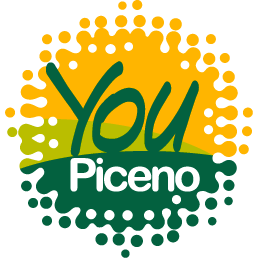Palazzo Canestrari in Force establishes an original association between the beauty of the gold objects exhibited in the small Museo Sistino di Arte Sacra and copper, a less prized material than gold, but one used in artistic processes able to give rise to authentic masterpieces.
Force is known as the “town of coppersmiths”, thanks to the presence of an ancient tradition of artistic copper-work.
An old legend has been handed down regarding the origins of copper-work in the area, which was probably introduced by the Farfensi monks, and “Baccajamento”, the original Force dialect often identified as the language of the coppersmiths. It tells the story of an old gypsy named Boro, who was a skilled metalworker.
Having arrived in Force, Boro introduced the craft of copper-working, teaching it to the young. However, he was unfortunate enough to arouse the envy of another gypsy who placed a ball of molten copper in Boro’s mouth as he slept.
From that moment on, Boro was no longer able to communicate because of his hoarse voice and deformed face. He therefore withdrew to the hills, where he continued to produce marvellous copper objects and teach his art to the young people of Force, despite not being able to communicate except through incomprehensible sounds that became known as “Baccajamento”.
Force’s coppersmiths primarily made objects for work and everyday use, such as pumps, skimmers and cauldrons for mulled wine and domestic items (bowls, jars, bed warmers, pots, etc.).
They became known throughout Central Italy due to the fact that they took part in many local fairs, where they traded their own products.
Copper-working has proved a real economic resource for the small village of Force. A statistic from 1892 tells us that in that year alone there were twenty-eight coppersmith’s workshops in Force, employing sixty-six people. The workshops were all located in the historic centre, opening onto the alleyways that still cut through the village today.
This ancient legend and the traditional copper-working processes are documented in the two exhibition sites that make up the Museo del Rame, one in the former church of San Biagio and one in Palazzo Canestrari (which also houses the Museo Sistino di Arte Sacra).
The former church of San Biagio, which can also be used as a multimedia theatre or conference venue if required, offers the chance to consult documentation, educational material and information on copper-working. It features a display of the most characteristic copper artefacts.
Palazzo Canestrari houses an educational workshop that offers the chance to gain first-hand experience of copper-working techniques. Its beautiful underground rooms house an exhibition of the most typical artisanal copper-working items, conveying the fine quality of the craftsmanship and the sophisticated techniques.
With the arrival of the Second World War and the advent of industrial production, copper-working entered a phase of gradual decline and the number of coppersmith’s workshops in Force fell drastically.
Today, this small village in Piceno is home to just two active workshops, one in Force and the other in nearby Comunanza, which specializes in artisanal copper-work.
Here in these workshops you can purchase fine copper objects and observe for yourself the simplicity of the equipment and organization that characterized the workshops of yesteryear.
Travel tips
Accommodation
Il Settecento – Period residence
Località San Giovanni; 0736 371045; info@ilsettecento.it; www.ilsettecento.it
Albergo La vecchia Posta
Piazza Marconi, 10; 0736 373255; www.albergolavecchiaposta.it
Eating out
Ramuse’
Località Casette 3 ; 328 6291859
What to see
Museo Sistino Vescovile, Via Beata Assunta Pallotta
Christmas – Easter – Summer Scheduled opening
Entrance fee €1.00
Museo del Rame, Via Beata Assunta Pallotta
All year Reservations required
Entrance fee Free of charge
What to buy
Diletti Giovanni – pink apples
Località Piroccio, 2; 0736373244
Coccetti Pietro – copper-working
Via Falconieri, 7
Events
6–10 August 2014


















